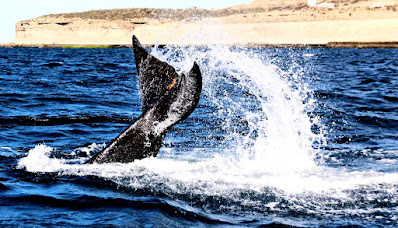WHALE FOSSIL BRIDGES GAP BETWEEN FOOT- AND TAIL-POWERED SWIMMING
A newly-described fossil whale stands for a brand-new species and an important action in the development of whale mobility, scientists record.
Researchers recuperated the fossilized remains of Aegicetus gehennae in the Egyptian desert in 2007 and outdated them to about 35 million years back. The animal shows up to have adjusted for swimming through undulation of the mid-body and tail, rather as crocodiles swim today, says Philip Gingerich, teacher emeritus in the planet and ecological sciences division and curator emeritus at the Gallery of Paleontology.
The fossil record of whale development tracks the shift from land-dwelling forefathers to ocean-dwelling cetaceans. Protocetids are a team of very early, semi-aquatic whales known from the center of the Eocene, a geological epoch that started 56 million years back and finished 33.9 million years back. Researchers have found Protocetid remains in Africa, Australia or europe, and the Americas.
While modern whales are fully aquatic and use their tails to propel themselves through the sprinkle, researchers think most protocetids were semi-aquatic and swam mainly with their arm or legs.
judi bola favorit mengenai super agent raiola
FEET TO TAIL
In the PLOS ONE paper, Gingerich and associates explain a brand-new genus and species, Aegicetus gehennae, the first late-Eocene protocetid. Its body form resembles that of various other old whales of its time, such as the well-known Basilosaurus.
The scientists recommend that an undulatory swimming design might stand for a transitional phase in between the foot-powered swimming of very early whales and the tail-powered swimming of modern whales.
"Very early protocetid whales living 47 to 41 million years back were foot-powered swimmers. Later on, beginning about 37 million years back, whales became tail-powered swimmers," Gingerich says.
"This recently found fossil whale, Aegicetus, was intermediate in time and form and was transitional functionally in having actually the bigger and more effective vertebral column of a tail-powered swimmer," says Gingerich, also a teacher emeritus of ecology and transformative biology and of sociology.



